#Philip Wylie
Explore tagged Tumblr posts
Photo
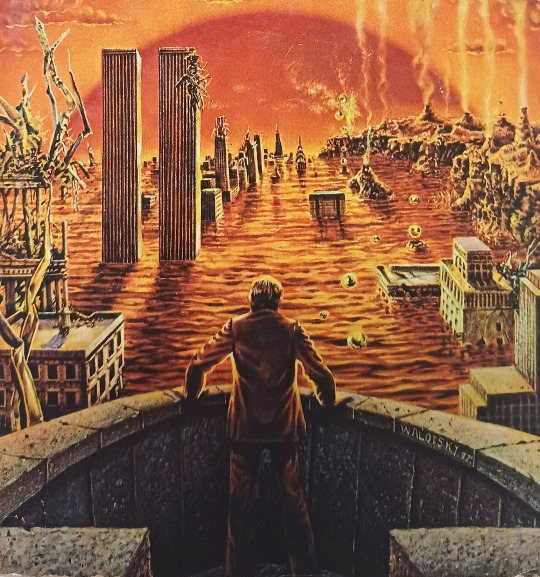
“The End of the Dream” Ron Walotsky 1972 Cover illustration for a novel by Philip Wylie.
75 notes
·
View notes
Text

A book you very likely don’t have on your shelf #444
1956
#atomic bomb#wwiii#1956#1950s#1950's#cover art#book cover#paperback#vintage paperback#science fiction#scifi#sci fi#sci-fi#ephemera#philip wylie
24 notes
·
View notes
Text











Murders in the Zoo (A. Edward Sutherland, 1933).
#murders in the zoo#a. edward sutherland#el asesino diabólico#Philip Wylie#Seton I. Miller#Milton Herbert Gropper#Lionel Atwill#Gail Patrick#Ernest Haller
9 notes
·
View notes
Text
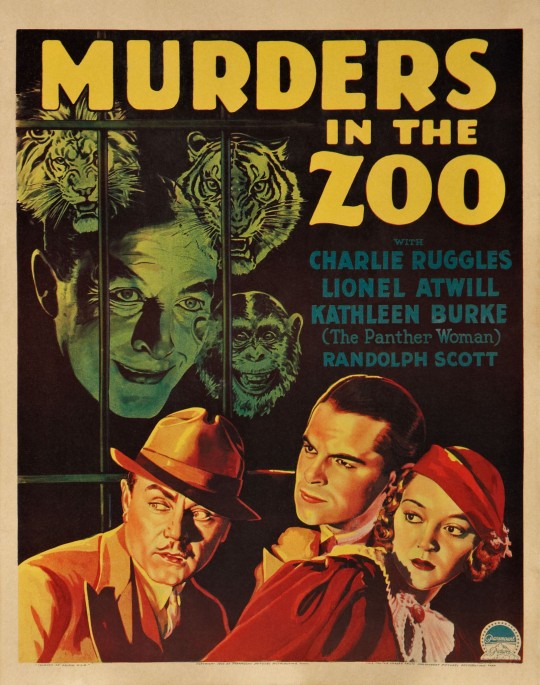

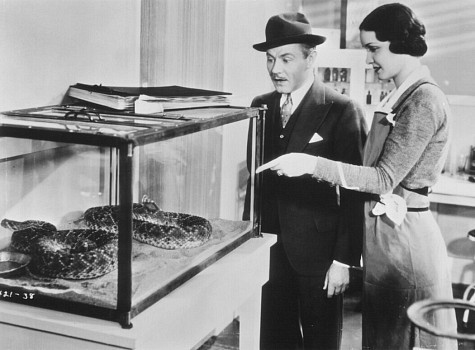

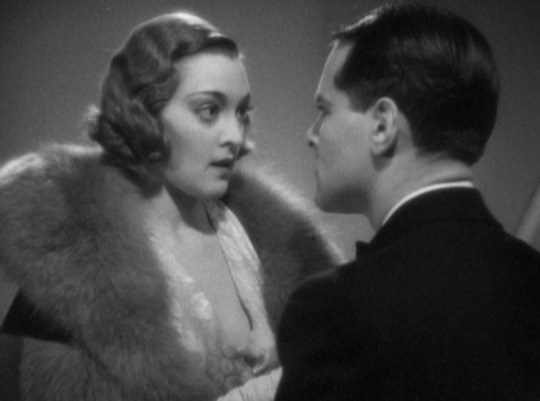

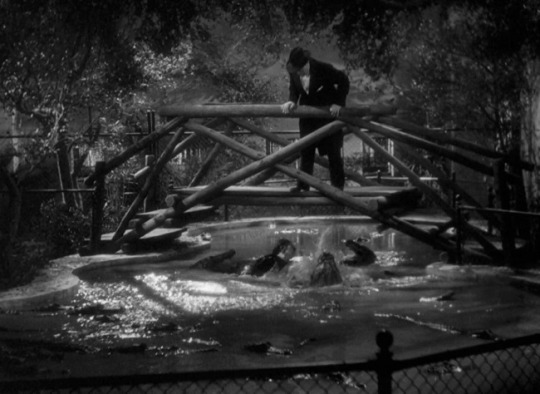
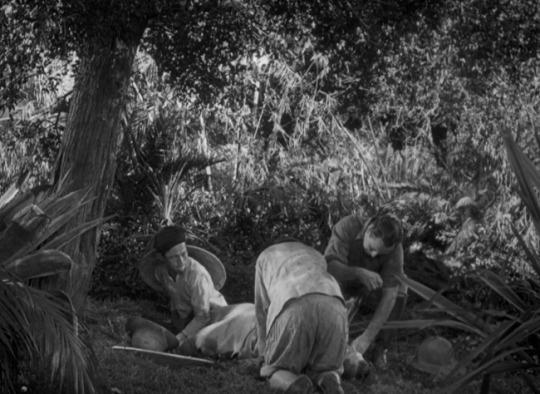


Murders in the Zoo (1933)
"Mr. Yates, never be afraid of a wild animal. Let it alone and it will leave you alone. That's more than you can say of most humans."
"You don't mean to say you really like these beasts?"
"I love them. Their honesty, their simplicity, their primitive emotions: they love, they hate, they kill."
#murders in the zoo#snake#american cinema#pre code film#1933#horror film#a. edward sutherland#philip wylie#seton i. miller#milton herbert gropper#lionel atwill#charles ruggles#gail patrick#randolph scott#john lodge#kathleen burke#harry beresford#edward mcwade#inspired pre code nastiness‚ right out the gate: opens on Atwill sewing shut the mouth of a romantic reveal and leaving him bound in the#jungle for the lions and consistently hits those levels of onscreen horror which wouldn't be seen again for several decades#i mean i wasn't expecting to actually SEE the results of Atwill's grisly surgery‚ nor an unfortunate being devoured by crocodiles but there#they are! Atwill of course is his usual magnetic self‚ managing to give a surprisingly controlled performance despite the largeness of the#part as written. the astonishingly beautiful Kathleen Burke does what she can with an underwritten part (and billed in publicity as the#Panther Women‚ following her star making turn in similarly shocking pre code Island of Lost Souls) but Charlie Ruggles' comic relief takes#quite a bit of goodwill to warm up to (i got there in the end‚ but his character really belongs in a different film entirely)#Randolph Scott's young romantic lead hasn't very much to do but it's nice to see him outside of a cowboy hat for once#my only real reservation is that you know all those animals were probably having a really bad time :(#such is the risk of 90 year old cinema i guess#still this was fun; and contrary to popular belief not a Universal film‚ but a Paramount one (only owned by Universal after they bought a#ton of Paramount's back catalogue)
5 notes
·
View notes
Text


THE UNSUNG LITERARY BASIS BEHIND UNIVERSAL'S "THE INVISIBLE MAN" (1933).
PIC(S) INFO: Spotlight on First Edition hardcover dust jacket cover art to "THE MURDERER INVISIBLE," written by Philip Wylie and published by Farrar & Rinehart Incorporated in 1931, New York, USA.
MINI-OVERVIEW: Mystery and science fiction novel of a man who can turn himself invisible and seeks to rule the world. Wylie freely admits indebtedness to Wells' novel "The Invisible Man" (which Wylie, unaccredited, helped write the screenplay for the 1933 Universal horror film).
EXTRA INFO: [Reference: Clareson, Science Fiction in America, 1870s-1930s 835. In 333. Bleiler (1978), p. 213. Reginald 15693. Hubin (1994) p. 882].
Sources: www.abebooks.com/first-edition/MURDERER-INVISIBLE-Wylie-Philip-Farrar-Rinehart/30864323096/bd.
#Wylie Philips 1931#Classic Monsters#1931#Classic Movies#30s Cinema#First Edition Books#Hardcover Books#The Murderer Invisible#The Murderer Invisible 1931#Halloween Vibes#Books#Spooky Season#Spooky Art#Halloween Art#Invisible#Halloween Season#Universal horror#Universal Monsters#The Invisible Man 1933#Dust Jacket#Thirties#Vintage Books#Dust Jacket Illustration#Halloween Mood#Philip Wylie#Illustration#Cinema#United States#Hardcover#1930s
1 note
·
View note
Text

FANNY NICOLE BRODAR (Norwegian/ American b. 1971 Oslo, Norway)
Painter
Fanny Brodar: Pineapple tango
Photo: Juan David Cortes
Brodar is influenced by the playful works of Japanese art, as well as the works of artists like Rose Wylie and the simplistic yet expressive characters of artists like Philip Guston. She loves improvisational theatre, and the way she paints is similar; spontaneously from a thought rather than pre-sketching.
This allows the viewer to see hints of her process through exposed pencil marks, paint drips, and deliberate unpainted areas. Fanny starts her paintings by working flat on the floor, layering paint, and then drawing and doodling directly on the canvas turning it upright on stretcher bars or the wall. This also allows her to use her whole body when making the initial gestures.
She was born in 1971 in Oslo, Norway, grew up in New York, and currently lives and works in Maine. (Text by Carver Hill Gallery)
2 notes
·
View notes
Text
„Sukces to drabina, po której nie sposób wspiąć się z rąkami w kieszeniach.”
- Philip Wylie
4 notes
·
View notes
Text
The starman legacy is gigantic.
I always knew that the starman legacy was big but never really sat down to just count it you know? So today I did and holy shit it's fucking infinite, like it's not just a bunch of dudes going by starman and associates.
It's more like starman + phantom lady + star-spangled kid + girl of 1000 gimmicks/gimmic girl/gimmix?? + Manhuter + martian manhunter + brainwave + mist.
Here's the list of superheroes and btw this is by legacy and not family ties:
1) Ted knight - starman I
2) Sylvester Pemberton - star-spangled kid I, skyman I
3) Sandra Knight - phantom lady I
4) Dan Richards - manhunter I
5) Paul Kirk - manhuter II
6) Roh Kar - martian manhunter I
7) Arnold Munro - iron Munro I, gladiator one
8) Pat Dugan - Stripesy I , S.T.R.I.P.E I
9) Merry Pemberton - girl of 1000 gimmicks I
10) Doris Lee - starman II
11) The starman of 1951 - starman III
12) Mikaal Tomas - starman IV
13) Prince Gavyn - starman V
14) Henry King Jr - brainwave jr, brainwave II
15) Mark Shaw - manhuter III
16) Will Payton - starman VI
17) David knight - starman VII
18) Dee Tyler - phantom lady II
19) Jack Knight - starman VIII
20) Chase Lawer - manhunter VI
21) J'onn j'onzz - martian manhunter II
22) Courtney Whitemore - star-spangled kid II, star girl I, starwoman I (IX)
23) Stormy Knight - Phantom lady III
24) Jacqueline Pemberton - Gimmic girl, gimmix
25) Jennifer knight - phantom lady IV
26) Kirk DePaul - manhuter V
27) Kate Spencer - manhuter VI
28) M'gann M'orzz - miss martian, martian manhunter III
29) Jacob Colby - skyman II
30) Mike Dugan - Stripesy II, S.T.R.I.P.E II
31) Sophia Becker - Phantom lady V
32) Patricia Dugan - starwoman II (X)
33) Ramsey Robinson - manhuter VII
34) Kyle knight - mist III
35) Thom Kallor - Starboy - starman XI
36) Farris Knight - starman XII
12 starmans, 7 manhunters, 5 phantom ladies, 3 martian manhunters, 2 gimmic girls, 2 S.T.R.I.P.ES, 2 skymans, 2 star-spangled kids, 1 brainwave, 1 iron Munro and 1 mist.
I say only superheroes because a lot of these people have supervillain relatives, it's also interesting to note that this the oldest super powered lineage in DC because Ramsey Robinson is the great-great-grandson of Hugo Munro the protagonist of the 1930 novel called Gladiator (one of the inspirations for superman) by Philip Wylie.
#dc comics#comic books#starman#phantom lady#brainwave jr#martian manhunter#manhuter#iron munro#gladiator#hugo munro#star spangled kid#gimmic girl#only a few DC legacies are intertwined as this one#like the whole hawkman/doctor fate/superman/batman/nighting/black bat situation#i read starman in one night a year ago and it won't leave my brain#someone else please tag everybody that is here
9 notes
·
View notes
Text
In which modern life has made me terribly spoiled:
When I was a kid, I would read about obscure horror titles and think, "Well, I'll almost certainly never be able to read that, but I'll keep the title in my head and maybe someday I'll find it in a used bookstore." And then I'd be really excited if I did.
Today, after that last post, I thought, "Maybe I should actually read Philip Wylie's The Murderer Invisible," so I went to look for it. And I am now so accustomed to being able to get whatever weird obscure horror title I want from one of my libraries, or at least as a free/very cheap ebook that I was actually shocked and dismayed to find that this one wanted me to pay full price for it.
And now I have to decide if I want to pay ten whole dollars for a book I almost certainly only want to read once.
#genuinely i live in a time of fabulous riches when it comes to acquiring weird obscure media#but also#ten whole dollars
6 notes
·
View notes
Text
Dread by the Decade: Island of Lost Souls
👻 You can support me on Ko-fi ❤️

★★★★
Plot: A sailor finds himself on an island where a mad doctor is blurring the lines between man and beast.
Review: Provocative and strange, Island of Lost Souls raises ethical questions, before providing its own deeply unsettling answers.

Source Material: The Island of Doctor Moreau by H. G. Wells Year: 1932 Genre: Sci-Fi Horror, Creature Feature Country: United States Language: English Runtime: 1 hour 10 minutes

Director: Erle C. Kenton Writers: Waldemar Young, Philip Wylie Cinematographer: Karl Struss Cast: Charles Laughton, Richard Arlen, Arthur Hohl, Kathleen Burke, Leila Hyams, Stanley Fields

------
Story: 4/5 - An intriguing exploration of unethical science hampered some by the reductive portrayal of the islands' occupants.
Performances: 4/5 - Laughton is a delightful mix of campy and sinister, balanced well by Hohl's somberness. The rest of the cast is sympathetic, with Fields' arc being my favorite.
Cinematography: 4.5/5 - Gorgeous use of shadows.

Editing: 4/5
Effects: 4/5 - Well employed fog and fire.
Sets: 5/5 - Good mix of real locations and sets that reflects Moreau's melding of nature and science.
Costumes, Hair, & Make-Up: 5/5 - The creature makeup for this film is very innovative. The hoofed man was especially great.
youtube
Trigger Warnings:
Moderate violence (mostly off-screen)
Misogyny (uncritical)
Disturbing themes of animal and human experimentation
Body horror
Torture and medical abuse (largely off-screen)
A character wants a woman to be raped
#Island of Lost Souls (1932)#Island of Lost Souls#Erle C. Kenton#American#sci fi horror#science fiction#creature feature#Dread by the Decade#review#1930s#★★★★
13 notes
·
View notes
Text
Pulpltober 2024 Roundup Days 2-5
OK, here we go!
Obviously, I was late for all of these, as have been several others, so I will update this if/when they get around to posting. I will be talking about stuff on the day they're for, not the day they were posting, and because I'm lazy, I will ignore my own extremely minimal contributions.
So, let's take it from the top.
2-Doc Savage/Sci-Fi Superman. All theme today, with two entries.
-First, we have @themailedfist-blog who went Theme, posting several arts of and some thoughts on a character I am not sure counts as a Pulp Hero, but I'm not going to argue with Judge Joseph Dredd!
-Next, we have @haldrada-art, who gave us an original art of Hugo Danner, the protagonist of Philip Wylie's pulp SF novel Gladiator and one of the primary inspirations of Superman.
3-The Green Hornet/I’m Your Villain. Three posts.
-@themailedfist-blog went theme again, with some thoughts and art of a character I wish I knew more about, Captain Blood!
-@skjam returned after a one-day hiatus by posting some thoughts and linking to a review of some media for the day's Character, The Green Hornet.
-@haldrada-art gave us a lovely original art of not only The Green Hornet, but his sidekick/partner Kato!
4-El Santo/Champion of Justice. Again, three posts. All Theme, and I'm only familiar with one of them.
-@themailedfist-blog gave us some arts of Robert E. Howard's Sailor Steve Costigan, and also came in some trivia about the character I didn't know, which is always neat.
-@skjam Gave us some thoughts, a link to a review, and several videos relating to a character I was only vaguely aware of, Tiger Mask.
-@haldrada-art is still working on his entry for the day's theme, but shared a WIP of his original art of Flash Gordon! (will RB this when he posts the completed version, etc.) (also a bonus WIP of the entry for the previous day)
5-Vampirella/Monster Hero. Two entries, both Theme, which seems to be happening a lot this year, huh?
-@themailedfist-blog as his custom, posted arts and thoughts about Abe Sapien!
-@skjam laid down some thoughts and linked a review about Felifax, plus a bonus link to a review of the novel Tigerman by Nick Harkaway.
Thank you everyone who has participated so far, feel free to join in the fun if you haven't yet, and let me know about anyone or anything I may have missed!
#Doc Savage#Judge Dredd#Hugo Danner#Green Hornet#Kato#The Green Hornet#Green Hornet and Kato#The Green Hornet and Kato#Captain Blood#El Santo#Flash Gordon#Tiger Mask#Sailor Steve Costigan#Vampirella#Abe Sapien#Felifax#Pulp Heroes#Pulptober#Pulptober 2024#Inktober#Inktobers#Inktober 2024#themailedfist-blog#skjam#haldrada-art
4 notes
·
View notes
Text
Sci-Fi Saturday: Buck Rogers and Flash Gordon Conquers the Universe

Week 19:
Film(s): Buck Rogers (Dir. Ford Beebe and Saul A. Goodkin, 1939, USA); Flash Gordon Conquers the Universe (Dir. Ford Beebe and Ray Taylor, 1940, USA)
Viewing Format: DVD and Streaming
Date Watched: 2021-10-08, 2021-10-22, and 2021-10-29
Rationale for Inclusion:
So far we have covered adaptations of some of the foundational literary works of science fiction, but this week we move onto two influential franchises that originated in the funny papers: Buck Rogers and Flash Gordon.
To some degree, I know that I am doing both characters a disservice by lumping the two together, as the general public tends to view them interchangeably, but the motion picture serials featuring the characters were both produced by Universal Studios and shared actors, behind the camera talent, and props. In fact, Buster Crabbe stars as the title character in both Buck Rogers (Dir. Ford Beebe and Saul A. Goodkin, 1939, USA) and Flash Gordon Conquers the Universe (Dir. Ford Beebe and Ray Taylor, 1940, USA).
The Buck Rogers in the 25th Century A.D. comic strip was first published in 1929. Modern day former aviator Buck Rogers ends up getting trapped in a cave while carrying out a surveying job, where a strange gas renders him unconscious and keeps him in suspended animation until he awakens 500 years later in 2429. In the future that Buck awakens in, the Mongol Reds have conquered the United States forcing Americans into rebel organizations to fight back to retake their country. Buck is supported in this strange new world by love interest Wilma Deering, plucky boy sidekick Buddy Deering, and scientist Dr. Huer. Together they fight forces led by Killer Kane and his lady Ardala.
Flash Gordon was created in 1934 in response to the popularity and commercial success of the Buck Rogers strip, and with an initial plot lifted from the 1933 Edwin Balmer & Philip Wylie novel When Worlds Collide, which itself would be adapted into a motion picture in 1951. During the present day, polo player and Yale graduate Flash Gordon, his love interest Dale Arden and scientist friend Dr. Hans Zarkov use Zarkov's newly invented rocketship to prevent planet Mongo from colliding with the earth. In the process, they run afoul of Mongo's malevolent ruler Ming the Merciless. Their adventures later include various kingdoms on planet Mongo and later planets.
Despite being created second, Flash Gordon was adapted into a motion picture serial first in 1936. Motion picture serials, or chapter plays, had existed since the silent era and made the transition to sound. The two-reelers, 15-20 minute episodes, were screened along with newsreels, cartoons and stand-alone shorts as part of a motion picture theatrical presentation culminating in the screening of a feature film. Audiences had to return to the theater each week for the next installment, with serials lasting 12 to 15 chapters. The format ceased to be by the mid-1950s due to television becoming the preferred mode of distribution of episodic moving image entertainment. The serials did, however, become known to new audiences when they too ended up broadcast on television in subsequent years.
Since Buck Rogers and Flash Gordon were both action oriented, episodic comic strip narratives, they were perfect candidates for serial adaptation. In addition to Flash Gordon (Dir. Frederick Stephani, 1936, USA), Flash and friends appeared in the serial Flash Gordon's Trip to Mars (Dir. Ford Beebe, Robert F. Hill, and Frederick Stephani, 1938, USA) before the serial we watched for this survey, Flash Gordon Conquers the Universe. The reason for the selection of this Flash Gordon serial was ease of access as well as having the comparison of an already established hero in a serial versus one that required an origin story, as was the case with Buck Rogers.
It was always a given that one or both serials would have been featured on this survey, as these space operas have influenced, and been parodied and homaged by, subsequent sci-fi films and television shows from their creation to the present day.
Reactions:
My partner either did not know or had forgotten that the vertical title, chapter and prologue scroll frequently associated with Star Wars (Star Wars: Episode IV: A New Hope, Dir. George Lucas, 1977, USA) had originated with these sci-fi serials. His reaction of "that's where that comes from!" was fantastic to witness.
I, meanwhile, was amused to note that amongst the production elements that both Buck Rogers and Flash Gordon Conquers the Universe share are excerpts from Franz Waxman's score for Bride of Frankenstein (Dir. James Whale, 1935, USA). Perhaps Universal Studios took a comment made by the reviewer for the Winnipeg Free Press to heart when they noted that the laboratory equipment in Bride of Frankenstein would have been more appropriate in Buck Rogers? More than likely the score was used for the same reason preexisting sets, props and stock footage were used in both of the Universal Studios produced serials: to save money.
In fact, props and costumes used in Flash Gordon's Trip to Mars were used in Buck Rogers, and then the "chamber of death dust experiments" from Buck Rogers was used in Flash Gordon Conquers the Universe.
The saminess between the serials resulted in us only watching half of each one. Not even the daring cliffhangers could bring us back after a certain point. Buster Crabbe plays Buck and Flash as essentially the same character despite the differences in their back stories and skill sets. The recaps at the top of each episode also made the serials hard to watch in rapid succession. Since the serials were created based on the understanding that people would wait a week between episodes, and may not have seen the proceeding episode or episodes, content overlaps quite a bit between installments. In their original edits, serials were not meant to be watched in one sitting.
Another grating aspect for modern audiences is the Yellow Peril influence on the way the villains are named and portrayed in the serials, especially in Flash Gordon Conquers the Universe. Befitting of a sci-fi narrative that heavily borrowed from preexisting content, Flash Gordon's arch enemy Ming the Merciless (Charles Middleton) is based on the supervillain Dr. Fu Manchu. Like his inspiration, in the moving image adaptation Ming is portrayed by a white actor in yellowface. This insensitive tradition would continue in future adaptations well into the 1980s.
Those criticisms aside, after having seen Buck Rogers and Flash Gordon parodied in everything from a Daffy Duck cartoon to Star Trek: Voyager, we expected the serial episodes to be a lot more cheesy and kitschy than they were in and of themselves, and in the context of the survey. The plots, settings and costumes are certainly ripe for the exaggeration that followed, but the originals aren't as over the top as the popular imagination would have you expect.
Buck and Flash will return to the survey in their own feature films in 1979 and 1980 respectively, thanks to the success of Star Wars making retro, space opera cool again in 1977.
3 notes
·
View notes
Text

The novel that supposedly inspired the creation of Superman.
A book you very likely don’t have on your shelf #363
1949
#cover art#paperback#vintage paperbacks#1949#Philip Wylie#science fiction#scifi#fantasy#superman#1940s#1940's#ephemera
27 notes
·
View notes
Text
Watching outlander and I choked when I saw Philip wylie oh my god I'm in tears this episode will be fun
#outlander#outlander s5#just the first few shots of him on that boat Like That and waltzing off like that#his mannerisms#cant wait to see him getting his ass kicked#update. dull episode and i dont give a dang about the random ass locust plague or whatever.#this was such a fun part of the book... mystery to solve and everyone a little hazy with drink from the wedding...
2 notes
·
View notes
Text
Bells for a New Year
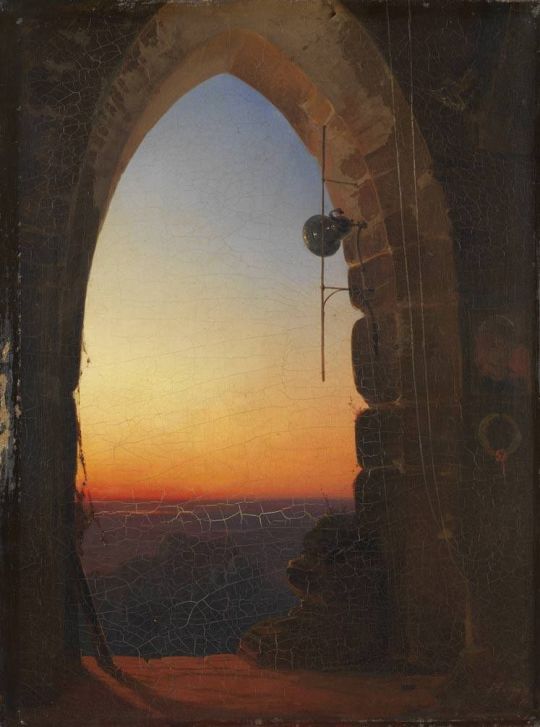
Bells in the Rain
Sleep falls, with limpid drops of rain, Upon the steep cliffs of the town. Sleep falls; men are at peace again Awhile the small drops fall softly down.
The bright drops ring like bells of glass Thinned by the wind, and lightly blown; Sleep cannot fall on peaceful grass So softly as it falls on stone.
Peace falls unheeded on the dead Asleep; they have had deep peace to drink; Upon a live man's bloody head It falls most tenderly, I think.
—Elinor Wylie

In Tenebris
All within is warm, Here without it's very cold, Now the year is grown so old And the dead leaves swarm. In your heart is light, Here without it's very dark, When shall I hear the lark? When see aright? Oh, for a moment's space! Draw the clinging curtains wide Whilst I wait and yearn outside Let the light fall on my face.
—Ford Madox Ford
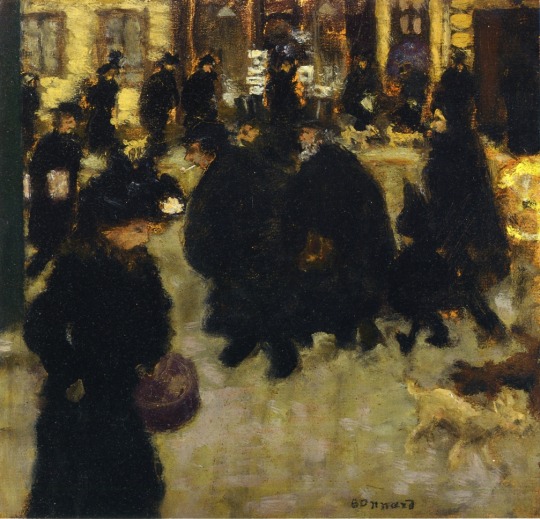
To Time, New Year’s Eve
Well, my dear Time, you are not going to fool me into making myself ridiculous this New Year's Eve with a lot of bonny but impossible resolutions. I know that you are playing with me just as a cat plays with a mouse; yet even the most piteous mousekin sometimes causes his tormentor surprise or disappointment by getting under a bureau or behind the stove, where, for the moment, she cannot paw him. Every now and then, with a little luck, I shall pull off just such a scurry into temporary immortality. It may come by reading Dickens or by seeing a sunset, or by lunching with friends, or by forgetting to wind the alarm clock, or by contemplating the rosy little pate of my daughter, who is still only a nine days' wonder—so young that she doesn't even know what you are doing to her. But you are not going to have the laugh on me by luring me into resolutions. I know my weaknesses. I know that I shall probably continue to annoy newsdealers by reading the magazines on the stalls instead of buying them; that I shall put off having my hair cut; drop tobacco cinders on my waistcoat; feel bored at the idea of having to shave and get dressed; be nervous when the gas burner pops when turned off; buy more Liberty Bonds than I can afford and have to hock them at a grievous loss. I shall continue to be pleasant to insurance agents, from sheer lack of manhood; and to keep library books out over the date and so incur a fine. My only hope, you see, is resolutely to determine to persist in these failings. Then, by sheer perversity, I may grow out of them.
—from A Letter to Father Time by Christopher Morley
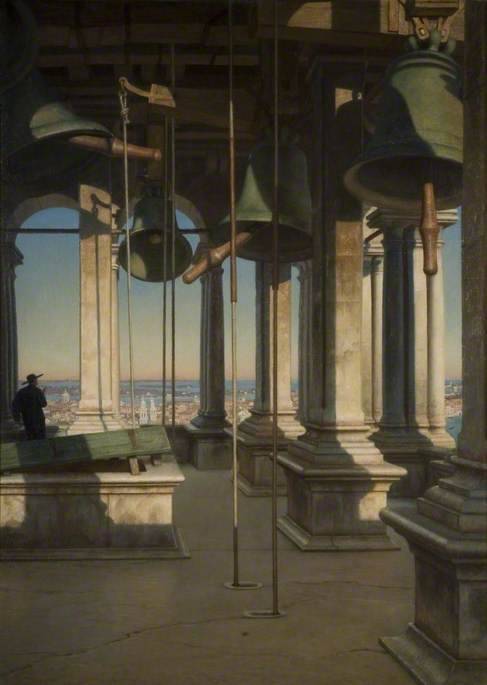
The Belfry of Bruges
In the marketplace of Bruges stands the belfry old and brown; Thrice consumed and thrice rebuilded, still it watches o’er the town.
As the summer morn was breaking, on that lofty tower I stood, And the world threw off the darkness, like the weeds of widowhood.
Thick with towns and hamlets studded, and with streams and vapors gray, Like a shield embossed with silver, round and vast the landscape lay.
At my feet the city slumbered. From its chimneys, here and there, Wreaths of snow-white smoke, ascending, vanished, ghost-like, into air.
Not a sound rose from the city at that early morning hour, But I heard a heart of iron beating in the ancient tower.
From their nests beneath the rafters sang the swallows wild and high; And the world, beneath me sleeping, seemed more distant than the sky.
Then most musical and solemn, bringing back the olden times, With their strange, unearthly changes rang the melancholy chimes,
Like the psalms from some old cloister, when the nuns sing in the choir; And the great bell tolled among them, like the chanting of a friar.
Visions of the days departed, shadowy phantoms filled my brain; They who live in history only seemed to walk the earth again;
All the Foresters of Flanders – mighty Baldwin Bras de Fer, Lyderick du Bucq and Cressy Philip, Guy de Dampierre.
I beheld the pageants splendid that adorned those days of old; Stately dames, like queens attended, knights who bore the Fleece of Gold;
Lombard and Venetian merchants with deep-laden argosies; Ministers from twenty nations; more than royal pomp and ease.
I beheld proud Maximilian, kneeling humbly on the ground; I beheld the gentle Mary, hunting with her hawk and hound;
And her lighted bridal-chamber, where a duke slept with the queen, And the armed guard around them, and the sword unsheathed between.
I beheld the Flemish weavers, with Namur and Juliers bold, Marching homeward from the bloody battle of the Spurs of Gold;
Saw the light at Minnewater, saw the White Hoods moving west, Saw great Artevelde victorious scale the Golden Dragon’s nest.
And again the whiskered Spaniard all the land with terror smote; And again the wild alarum sounded from the tocsin’s throat;
Till the bell of Ghent responded o’er lagoon and dike of sand, “I am Roland! I am Roland! There is victory in the land!”
Then the sound of drums aroused me. The awakened city’s roar Chased the phantoms I had summoned back into their graves once more.
Hours had passed away like minutes; and, before I was aware, Lo! the shadow of the belfry crossed the sun-illumined square.
—Henry Wadsworth Longfellow (1807-1882)

#literature#poetry#dark academia#light academia#classic#victorian era#fin de siècle#impressionism#inspiration
3 notes
·
View notes
Text
Building a Porn Empire
Playboy was an overnight success story, with circulation growing from 53,991 in its first month (December 1953) to 175,000 by its first anniversary issue. By 1959 Playboy had a monthly circulation of 1 million. In its heyday of the late 1960s and early 1970s, Playboy was an enormous company, with sales of over $200 million and more than five thousand employees. 2 Clearly, as Michael Kimmel argues, “ Playboy struck a nerve with American men,” and many books have attempted to describe exactly what that nerve was. 3 To explore the Playboy phenomenon and the magazine’s role in laying the groundwork for the contemporary porn industry, the magazine has to be historically located in the economic and cultural trends at work during the 1950s, which at different times and to varying degrees contributed to Playboy becoming the lifestyle-pornographic magazine of choice for the upwardly mobile, white American male in the postwar years. Historians agree that the 1950s were a time of enormous change in the United States, both economically and culturally. They point to the economic boom, the baby boom, the growth of suburbia, the pressure to marry at an early age, and the push toward consumption as a way of life as trends that, while not being specific to the 1950s, were nonetheless magnified in that decade. 4 Playboy occupied an ambivalent place in relation to these trends—it celebrated celebrated some as good for the country while condemning others as harmful to American men. It was its uncanny ability to pick and choose among these trends that made Playboy a success not only with readers but also, eventually, with advertisers. Hefner was clear about his target audience from the very beginning. He wrote in the first issue of Playboy, published in December 1953: “If you are a man between 18 and 80, Playboy is meant for you. . . . We want to make it clear from the start, we aren’t a ‘family’ magazine. If you are somebody’s sister, wife or mother-in-law and picked us up by mistake, please pass us along to the man in your life and get back to the Ladies’ Home Companion. ” For a magazine to clearly state that it was not “a family magazine” in the 1950s was close to heresy. According to social historian Stephanie Coontz, it was during this period that there was an unprecedented rise in the marriage rate, the age for marriage and motherhood fell, fertility increased, and divorce rates declined. From family restaurants to the family car, “the family was everywhere hailed as the most basic institution in society.” The print media also got in on the act, carrying stories about the supposed awfulness of being single. Reader’s Digest ran a story entitled “You Don’t Know How Lucky You Are to Be Married,” which focused on the “harrowing situation of single life.” One writer went so far as to suggest that “except for the sick, the badly crippled, the deformed, the emotionally warped and the mentally defective, almost everyone has an opportunity to marry.” In the 1950s, “emotionally warped” was a coded way of saying homosexual, and indeed many single people were investigated as potential homosexuals and by extension Communists, since the two were often linked during the McCarthy years. Probably one of the most woman-hating books of the time was Philip Wylie’s Generation of Vipers, first published in 1942 and reprinted after World War II. For Wylie, wives were the cause of men’s problems because they controlled the home with an iron fist and worked their spouses to death in order to enjoy a life of leisure. As Wylie so eloquently put it, “It is her man who worries about where to acquire the money while she worries about how to spend it, so he has the ulcers and she has the guts of a bear.” It was during these woman-hating, pro-family years that Playboy hit the newsstands. Picking up on the themes of the 1950s, Playboy editors, from the very first issue, defined single women as menaces to the Playboy reader since they were out to trap him into marriage and bleed him financially. Indeed, the first major article in the first issue of Playboy was called “Miss Gold-Digger of 1953.” Bemoaning the good old days when alimony was reserved for “little floosies,” Playboy editors wrote, “When a modern day marriage ends, it doesn’t matter who’s to blame—it’s always the guy who pays and pays and pays and pays.” Echoing Wylie’s assertion that women had taken over America, the article continued, “A couple of generations ago, this was a man’s world, nothing could be further from the truth in 1953.”
Playboy was not the only media product to sell the 1950s young adult an ideology of consumption. According to historian George Lipsitz, the main function of television in the 1950s was to provide “legitimation for transformations in values initiated by the new economic imperatives of postwar America.” One way to do this, according to Ernest Dichter, the marketing guru of the 1950s, was to demonstrate “that the hedonistic approach to life is a moral one, not an immoral one.” While Playboy was one of many media corporations to employ Dichter, it was one of a few whose clear aim was to turn the male into a consumer. Elaine May has argued that the 1950s was in general the period of the “expert,” where increasing numbers of people turned to professionals for advice on just about every aspect of life, from what to buy to how to prepare for a nuclear war. Playboy editors certainly played the role of expert, telling readers “what to wear, eat, drink, read and drive, how to furnish their homes and listen to music, which nightclubs, restaurants, plays and films to attend, what equipment to own.” However, as with all advertising, the actual product on offer was not the commodity being advertised but rather the fantasy of transformation that this product promised to bring to the consumer’s life. The high-quality products shown in Playboy would transform the reader into a “playboy” who could then have the real prize: all the high-quality women he wanted—just like the ones who populated the magazine. The women in the Playboy pictorials were designed to be “teasers,” demonstrating to the reader what he could have if he adopted the Playboy lifestyle of high-level consumption. In an interview, Hefner revealed this strategy of sexualizing consumption when he explained: “ Playboy is a combination of sex . . . and status . . . the sex actually includes not only the Playmate and the cartoons and the jokes which describe boy-girl situations, but goes right down in all the service features.” Hefner, by sexualizing consumption, provided an extremely hospitable environment for advertisers looking to expand markets in the postwar boom. By the end of 1955, advertisers had overcome their initial fear of advertising in a “men’s entertainment” magazine and were, according to Weyr, “clamoring to buy.” During the 1950s and 1960s, Playboy continued to increase its readership and its advertising revenue, and by the late 1960s the circulation figures reached an all-time high of 4.5 million. An article in Business Week in 1969 entitled “ Playboy Puts a Glint in the Admen’s Eyes” discussed the enormous popularity of Playboy magazine with advertisers, quoting a media man at J. Walter Thompson Company, the world’s largest advertising agency at the time, saying that years ago none of their clients would have touched Playboy but “today, it’s a routine buy.” The magazine then informed its readers that “last year JWT expenditure in the magazine increased 70%.” Despite the increased advertising revenue that Playboy enjoyed well into the 1960s, its relationship with advertisers was stormy. The main reason for this was Playboy’s somewhat split personality as both a lifestyle magazine and a porn publication. According to Weyr, the advertisers liked Playboy ’s readership (mostly white, college-educated, upwardly mobile men) yet disliked its sexual content for fear of being associated with a sleazy porn magazine. In the early years, Hefner and his major associates regularly flew to New York for emergency meetings with advertisers whose clients felt that the pictorials or stories had become too explicit. Many of these meetings ended in a promise from the Playboy staff to limit the overt sexual content and no revenue was lost. One such battle occurred over a story by Calder Willingham that appeared in the July 1962 issue. Called “Bus Story,” it focuses on the rape of a seventeen-year-old girl by an older man. However, as in much of pornography, the story is written in a way that sexualizes the brutality: “There are times to be tender and times to be just a little rough. This was a time to be just a little rough. Left forearm heavily across her breasts and left hand gripping her shoulder so hard she winced, Harry used his knees like a wedge, grey eyes hypnotic above her. ‘Open your legs,’ he said in a cold, hard and vicious tone. Lips apart and eyes empty with shock, the girl did as she was told. A moment later, hands limp on his shoulders, a gasp came from her. Then another gasp.” According to Weyr, a number of companies, including Ford Motor, threatened to cancel contracts with Playboy and a number of newsstand wholesalers refused to carry the July issue. Fear of losing the advertisers prompted Hefner to write a letter of apology to all the major corporations who advertised in the July issue, and he offered to meet personally with their representatives. This kind of economic power meant that advertisers policed (and continue to police) the sexual content of Playboy. Thus, built into the magazine was a conflict between the need to attract advertising revenue and the need to keep readers interested by publishing sexual content.

2 notes
·
View notes